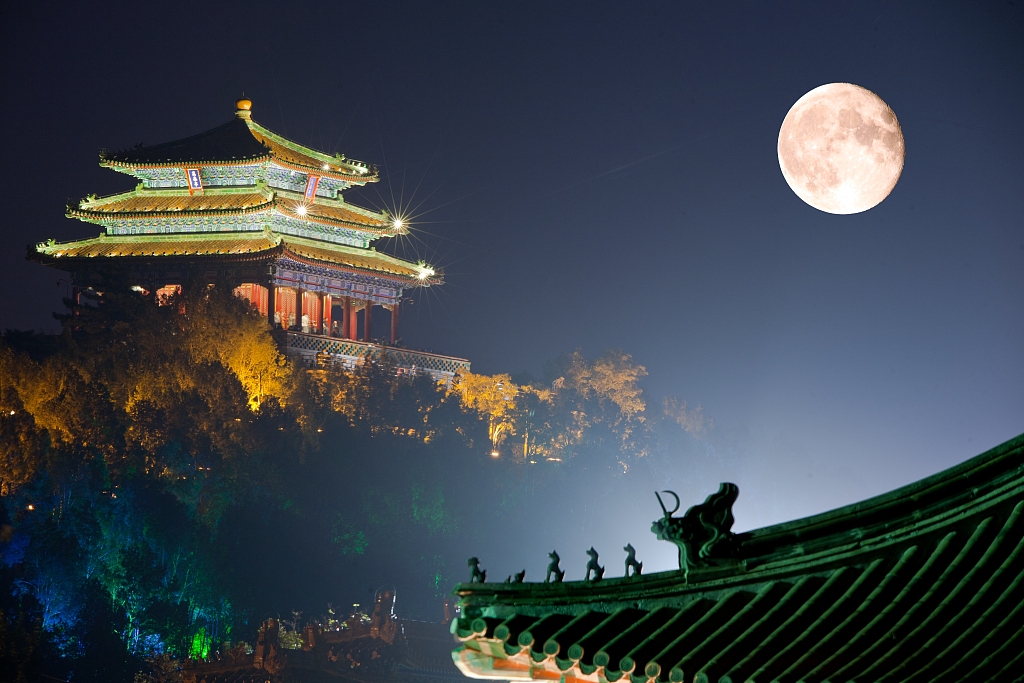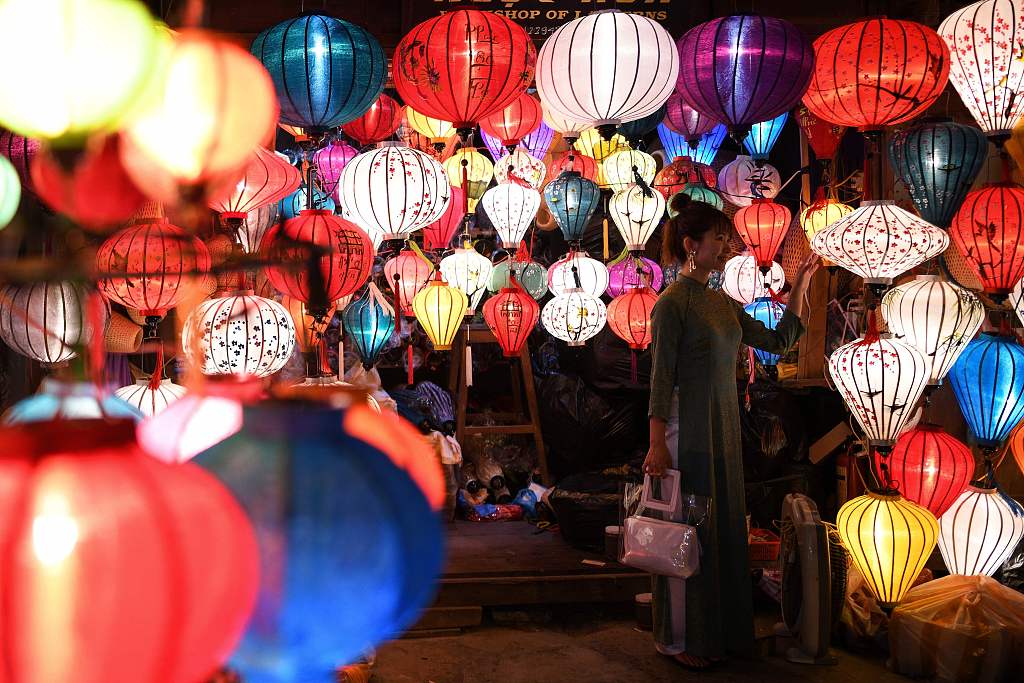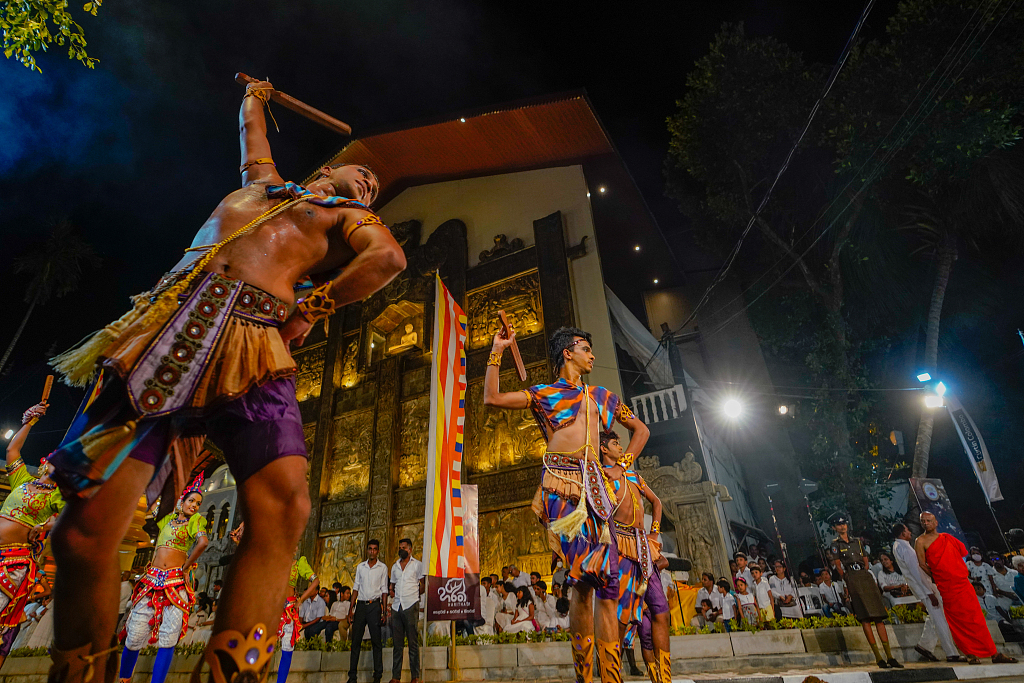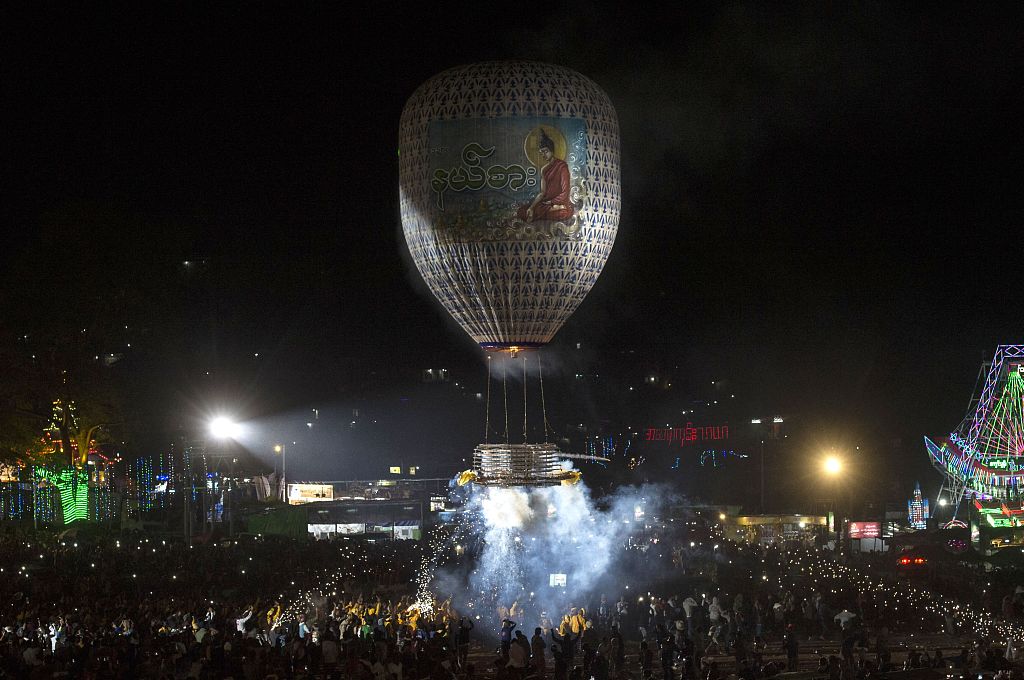
This file photo shows a view of the Moon in Jingshan Park, Beijing. /CFP
This file photo shows a view of the Moon in Jingshan Park, Beijing. /CFP
Since the dawn of time, humans have been fascinated by the Moon, associating it with folklore, fables, astrology and even the supernatural things. Prior to the first Moon landing in 1969, humankind had celebrated and venerated it for thousands of years. Across Asian countries – including China, Sri Lanka, Myanmar and Vietnam – festivals are held in the months when the full Moon appears.

An underwater dancer portrays Chang'e at an aquarium on September 27, 2023 in Wuhan, Hubei Province. /CFP
An underwater dancer portrays Chang'e at an aquarium on September 27, 2023 in Wuhan, Hubei Province. /CFP
On Friday in China, Mid-Autumn Festival will kick off an eight-day holiday period this year. It's one of the four biggest cultural observances in the country, next to Spring Festival, Qingming and the Dragon Boat Festival. The holiday is celebrated with family reunions, banquets, dinner parties, holiday decorations and special food and drinks like mooncakes and osmanthus wine. At this time of the year, the moon goddess Chang'e and her companion the Jade Rabbit from Chinese folklore are remembered, as they watch over the Earth from a palace on the Moon.

This file photo shows a woman admiring paper lanterns at a shop in Hoi An, Vietnam. /CFP
This file photo shows a woman admiring paper lanterns at a shop in Hoi An, Vietnam. /CFP
In Vietnam, the holiday is called "Tet Trung Thu" and is associated with a different story about a man called Cuoi who hung onto a magical banyan tree while it floated towards the Moon. Lion dances and mooncakes fill every corner of the country over the holiday.

This file photo shows dancers in traditional costume participating in a Navam Poya parade in Colombo, Sri Lanka. /CFP
This file photo shows dancers in traditional costume participating in a Navam Poya parade in Colombo, Sri Lanka. /CFP
In Sri Lanka, every full Moon Day is a public holiday – some 12 or even 13 times a year. Known as Poya Days, the observance is linked to the Buddhist lunar calendar, and is a busy time at temples across the country. Folk dances, music, and singing occur on these days, as well as fasting. The Temple of the Tooth in Kandy and the Sri Maha Boodhi temple are both popular places on Poya Days. On Esala Poya, which takes place in July, elephants can be seen in neighborhood parades. Many businesses close on these days as people participate in festival activities countrywide.

This file photo shows people releasing a hot-air balloon in Taunggyi, Myanmar. /CFP
This file photo shows people releasing a hot-air balloon in Taunggyi, Myanmar. /CFP
In Myanmar, Thadingyut is considered to be the second most popular holiday after Thingyan, the New Year Water Festival. Thadingyut is a festival of lights and is held over three days during the full Moon of the seventh month of the Burmese calendar, which mostly falls in October of the Gregorian calendar. A diverse range of festivals take place throughout Myanmar over Thadingyut, including the Dancing Elephants Festival in Kyaukse where dancers dress up in elephant costumes, the Shwe Kyin Light Festival in Bago which includes a boat race and the floating of paper lanterns, and the Hot-Air Balloon Festival in Taunggyi. It's also a time for paying respect to parents, teachers and elders and when grownups give snacks and money to youngsters.